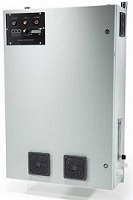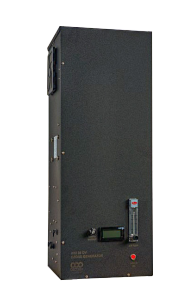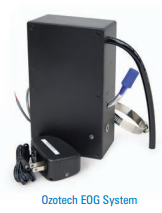
Over the years, ozonation has emerged as one of the most effective water treatment technologies for rapid oxidation and disinfection. Widely used for bottled drinking water, ozonation is performed by injecting ozone gas, which can be introduced at various points of the treatment depending on what one is trying to accomplish. At Intec-America, we provide ozone water treatment systems from industry-leading brands. Being at the forefront of water treatment technology for several decades, we perfectly understand the requirements and needs of our clients.
What is Ozone?
Ozone is an inorganic molecule of oxygen that features three atoms of oxygen instead of two. This is why it is depicted by the chemical formula O3. Ozone is formed as a pale blue gas in the environment and it is distinguished by its pungent odor. Ozone is naturally formed in the atmosphere during the lightning and thunderstorm. The air receives its fresh smell after lightening. Ozone is one of the most powerful oxidizing agents found on the earth. It is considered to be 51 times stronger than chlorine, and is also perceived as an alternative to chlorine water treatment in many cases.
What is Ozonated Water?
Ozonated water is the water that is treated using ozone gas. The ozone gas is introduced through Ozonator and the gas dissolves in water until a reasonable concentration remains. This unstable molecule quickly reverts back to its natural state of O2 and is why ozonated water can be used for drinking.
How is Ozonation Performed?
Ozonation involves ozone gas, which is produced commercially onsite using an ozone generator. Ozone gas has a short lifespan and cannot be transported or stored for a long time. Typically, ozone gas can be produced from the ambient air. This equipment uses the air (or at times compressed oxygen) present in the atmosphere for ozone production. Although the purest form of oxygen gas is always recommended, it may drastically increase production costs. At times, an oxygen concentrator is used to increase ozone levels from a standard ozone generator. However, an ozone generator system is the most common source for producing ozone gas.
When air is used for oxygen, it is compressed, dried, and dehumidified because most ozone water treatment equipment use clean and dry gas. The air purification is accomplished using various types of filters, which can efficiently remove particulate matter. For oxygen concentrators, compressors are used to separate the oxygen from the nitrogen. In other instances, dehumidification is performed to prevent the buildup up nitic acid in the system.. Regardless of the air purification method, the air is made to pass through a chamber where electrons are produced upon application of current. These electrons initiate the separation and conversion of oxygen molecules to ozone molecules. They also produce free oxygen atoms, which form hydroxyl radicals on combining with hydrogen atoms in the air. These hydroxyl radicals lend oxidation properties to ozone. The gas featuring hydroxyl radicals and ozone is made through pass through the water tank. Ozone does not easily dissolve in water, which is why it is broken into small bubbles using diffusers to accelerate their absorption.
Advantages of Ozone Water Treatment
There are several advantages of ozone water treatment, which makes it popular among our clients. The following are a few prominent ones:
- Ozone water treatment is performed using ozone gas, which is natural gas and readily available. Thus, it adds no chemicals to water, which is why it is much better than chlorination.
- Ozone is considered more effective over chlorination and many other forms of disinfection because it can react with a wider range of viruses, bacteria, and protozoans.
- Ozone gas has a shorter required contact time (5 minutes versus 30 minutes), and it lasts from 10 to 30 minutes. This means you can get rid of viruses, bacteria, and protozoans in that short time.
- Ozonation produces no harmful residues or disinfection byproducts, which need removal after the treatment, which makes it one of the most effective disinfectant methods.
- It is proven that ozone molecules have a direct impact on the cell wall of microorganisms and they leach constituents out of it. This is why there is no cell growth of microorganisms after ozonation.
- Ozone is produced onsite using an ozone generator, which means the gas is not transported or stored continually in any chamber. This is why it is safe and clean than other water treatment techniques involving chemicals or gas.
- Ozone is a rapid oxidizer of metals such as iron and manganese and can be used early on for the pre-treatment of water. It is the best option to address slime producing species such as iron and sulfur reducing bacteria.
To gain benefits of ozone drinking water treatment, you need to source these ozone generator systems from trusted brands. You can get in touch with the Intec-America team today for more information on ozone generator systems and other effective water treatment technologies like copper ionization systems. Our experts would be happy to help you, always.




